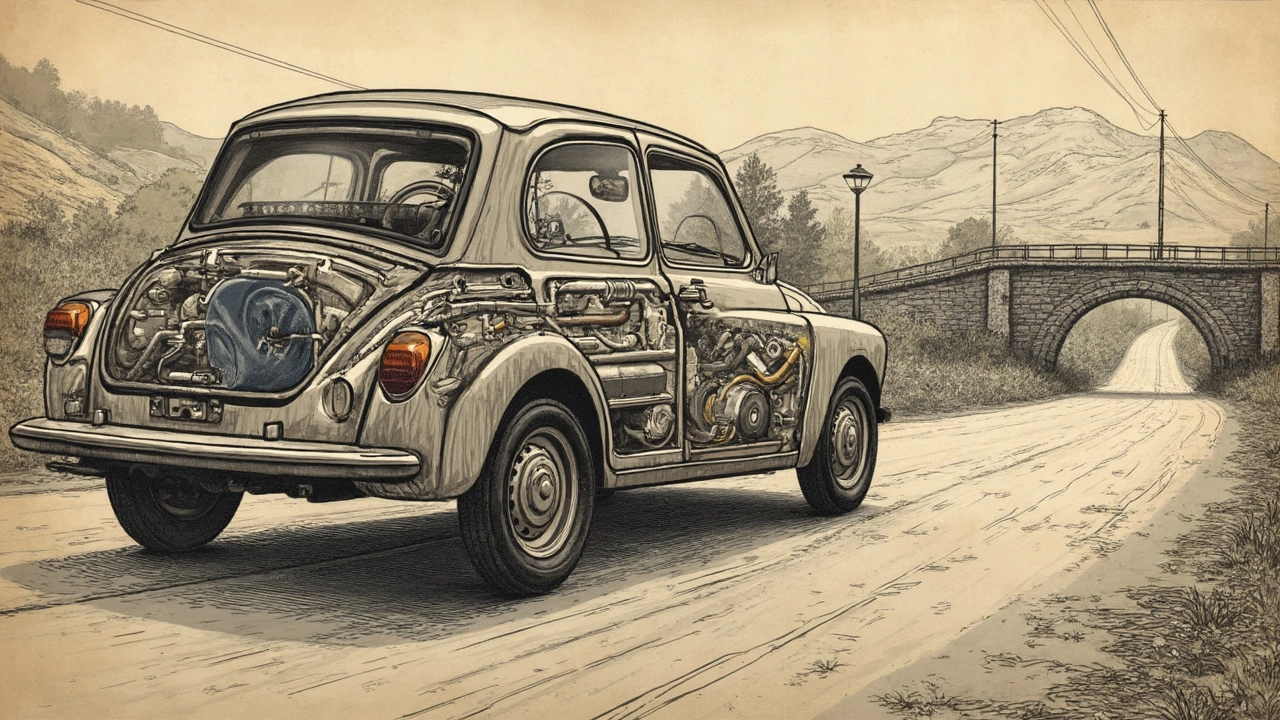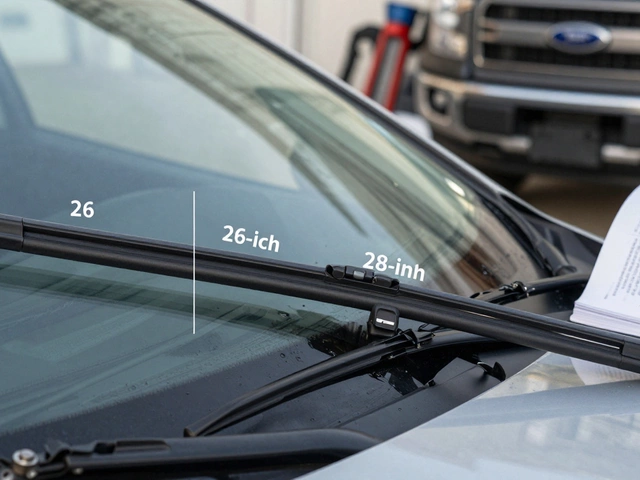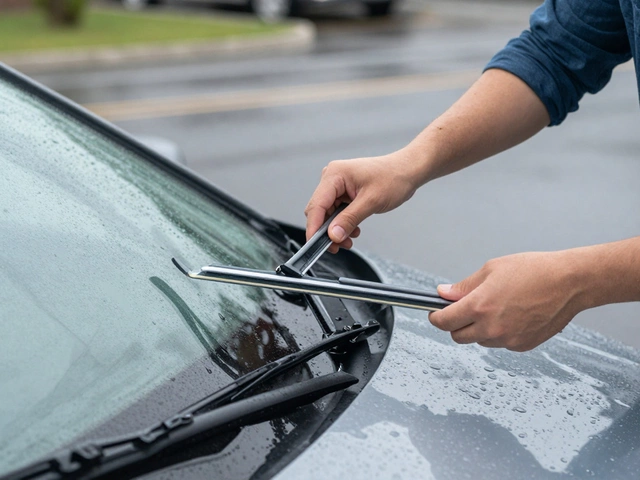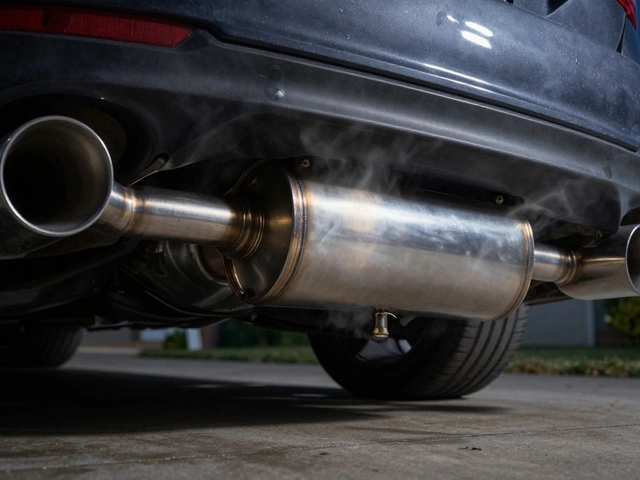If you've ever been stuck on the side of the road with steam billowing out from under your hood, you'd know just how crucial car radiators are. These bad boys are the heart of your car's cooling system, and when they fail, it can lead to some serious headaches, not to mention wallet aches. But what makes them conk out, and more importantly, how can you stop that from happening?
Let's start with checking what a radiator actually does. Its main job is pretty simple—keeping your engine from overheating. It does this by circulating coolant through the engine, which then gets cooled back down by the radiator. But like any piece of machinery, radiators can run into trouble. Leaks, blockages, and even just plain old age can be culprits. Understanding these issues means you're better prepared to prevent them.
Think of your radiator as a big filter. Over time, it can get clogged with all sorts of gunk—think rust, scale, and debris. These blockages can make it tough for the coolant to do its job. You might also run into leaks, which can leave your car high and dry, literally. And don't forget the thermostat—a small part, but its failure can lead to the oven-like conditions under your bonnet.
- What Does a Car Radiator Do?
- Common Causes of Radiator Failure
- Signs Your Radiator is in Trouble
- Preventing Radiator Issues
- When to Seek Professional Help
What Does a Car Radiator Do?
Alright, buckle up! We're diving into the world of car radiators, those unsung heroes nestled under your car's hood. The main gig for a radiator? Keeping your car's engine cool. It’s like a car's very own AC system, but for the engine.
Here's the lowdown: when your engine runs, it generates loads of heat. Too much heat, and it’s game over. That’s where the radiator steps in. It circulates coolant through the engine, absorbing all that excess heat. The coolant makes its way back to the radiator, where it's cooled down by airflow and then sent back into action. Say goodbye to overheating!
Think of a radiator as a heat exchange superstar. It needs everything to flow smoothly, and that isn't always easy. Air is pulled through the radiator's fins, cooling the fluid inside. Sounds simple, right? But those fins, yeah, they have to be in tip top shape, free from debris and bent out of place. It's all about maximum airflow, my friend.
The whole cooling system is like a team, with the radiator as the MVP. This includes things like hoses, the water pump, and the thermostat, all working together to keep the temperature just right. The radiator joins forces with the fan and airflow as you drive, making sure the coolant stays cool and your engine doesn’t overheat.
To make sure all this happens seamlessly, everything needs to be well-maintained and cleaned. A gunked-up radiator or a forgotten coolant change can lead to those dreaded roadside breakdowns. And who wants that?
Common Causes of Radiator Failure
Car radiators might seem robust, but several things can lead to their untimely demise. One of the big culprits is leaks. Over time, tiny cracks can develop in the radiator, often caused by corrosion or impact damage, allowing coolant to escape. Without enough coolant, your engine can overheat, turning a small leak into a big problem.
Another frequent issue is clogs. Your radiator works like a sieve, catching bits of rust, dirt, and debris that can sneak into the cooling system. If you don't flush the system regularly, these particles can build up and block the flow of coolant, reducing the radiator's efficiency. This blockage leaves your engine running hotter than it should.
Then we have the thermostat, a small yet mighty component responsible for regulating your engine's temperature. If it gets stuck or fails altogether, you're in for a world of overheating problems. Your car's cooling system can’t do its job properly, leading to excessive heat under the hood.
Last but not least, watch out for fan issues. The fan pulls air through the radiator to help dissipate heat. If it’s not working right—maybe due to a broken fan belt or motor—your radiator will struggle to keep things cool, especially on hot days or when idling.
Regular check-ups and maintenance can help catch these issues early, saving you from costly repairs down the road. Keep an eye on your dashboard's temperature gauge and trust your nose; a faint sweet smell might be a warning sign of a leak. Addressing these problems quickly can keep your cooling system in tip-top shape.

Signs Your Radiator is in Trouble
So, how do you know when your car radiators are about to give you grief? There are some clear signs that should set off alarm bells in your head (and car). Catching these early can save you from getting stuck on the roadside or facing hefty repair bills.
First, keep an eye on your temperature gauge. If it regularly shoots into the red, your radiator or cooling system isn't doing its job. This could be an early sign of overheating, a common issue when a radiator fails.
Another thing to watch out for is coolant leaks. If you see puddles of green or orange liquid under your car, it's likely coolant dripping from a leak. A leaking radiator means your car might not cool down properly, and that's a big no-no.
Next is rust or discoloration. Pop your hood and take a look—if the radiator has rust patches or you notice sediment in the coolant, something's clogging things up. This can reduce the efficiency of your cooling system and lead to trouble.
- Whining or grinding noises coming from the engine area.
- Steam or smoke coming from the front of your car.
- Your heater not working properly in the middle of winter.
Remember, pay attention to how your car behaves. If anything seems off, don't ignore it. Catching these signs early can mean the difference between a quick fix and an expensive overhaul. And if you're ever unsure, it's always a good idea to let a mechanic take a look.
Preventing Radiator Issues
Keeping your car radiators in good shape isn't as tricky as you might think. A little routine maintenance goes a long way, and it can save you from future grief on the highway. Let's break down some easy, practical steps you can take to prevent radiator problems.
First off, regularly checking your coolant level is a no-brainer. Coolant is vital for preventing overheating. If your coolant runs dry or gets too low, your radiator can't do its job properly. Make sure you top it up as needed and always follow the guidelines in your car's manual.
Next up is inspecting for leaks. Take a look under your car for any puddles or drips. Coolant often comes in bright colors like green or orange, so it's usually easy to spot. Catching these leaks early can stop minor issues from blowing up into big ones.
Flushing the radiator is another crucial step. Over time, deposits can build up and block the system. A radiator flush clears out the junk and keeps everything flowing smoothly. Most folks say you should do this every couple of years, but check what your car's manufacturer suggests.
Don't forget about the hoses and thermostats. Give them a once-over now and then to ensure they're still in good condition. A cracked hose or a faulty thermostat might lead to an overheated engine, and that's a headache nobody needs.
Lastly, pay attention to the cooling fans. If they're not spinning like they're supposed to, your radiator might struggle to keep things cool. A quick inspection can reveal if there's an electric issue or if something's jammed.
- Check and top up coolant regularly
- Inspect for leaks beneath the car
- Flush the radiator according to car manufacturer suggestions
- Examine hoses and thermostats for damage
- Ensure cooling fans are functioning properly
Following these steps could keep your radiator - and your car - happy. Remember, taking a bit of time to perform these checks can save you a lot of hassle down the road.

When to Seek Professional Help
Even if you’re handy with a spanner and have managed to handle a few car issues in the past, there are times when letting the pros step in really is the smartest move. Knowing when your car radiator woes need a professional's touch can save you from bigger bills down the road.
First off, if you’ve got coolant puddling under your car, bright green or orange stuff isn't supposed to be painting your driveway. Leaks can spring from a few different spots, but pinpointing an exact location requires some expertise. In many cases, it might mean your radiator’s sprung a leak somewhere inside, where only a good mechanic can reach.
Strange noises are another telltale sign something’s up. If your car's making a grinding or knocking noise while it’s running or just after you’ve switched it off, it could indicate a failing water pump or a blockage within the radiator, reducing coolant flow.
Then there’s the temperature gauge on your dashboard suddenly turning into a ticking time bomb. If it regularly reads higher than normal, that’s a flashing neon sign that professional help is called for. Heat management plays a crucial role in keeping your engine healthy, so don't ignore those red flags.
Consider this table for common radiators faults and when they happen most often:
| Issue | Common Occurrence |
|---|---|
| Leaking coolant | When parked for extended periods |
| Overheating engine | During long drives or warm weather |
| Unusual noises | At startup or shutdown |
- If you smell something sweet coming from your car, and it's not candy someone left in the back, that’s probably coolant leaking, and you need a pro to sniff out the source.
- Lastly, if your DIY fixes aren’t cutting it, don’t keep hesitating. Pro mechanics have specialized tools to pressure test the system, they'll identify the problem faster and with more accuracy.
All in all, don't gamble with your engine's health if you notice any of these signs. A quick trip to a specialist will not only extend the life of your cooling system but could prevent a minor issue from snowballing into an expensive overhaul.








